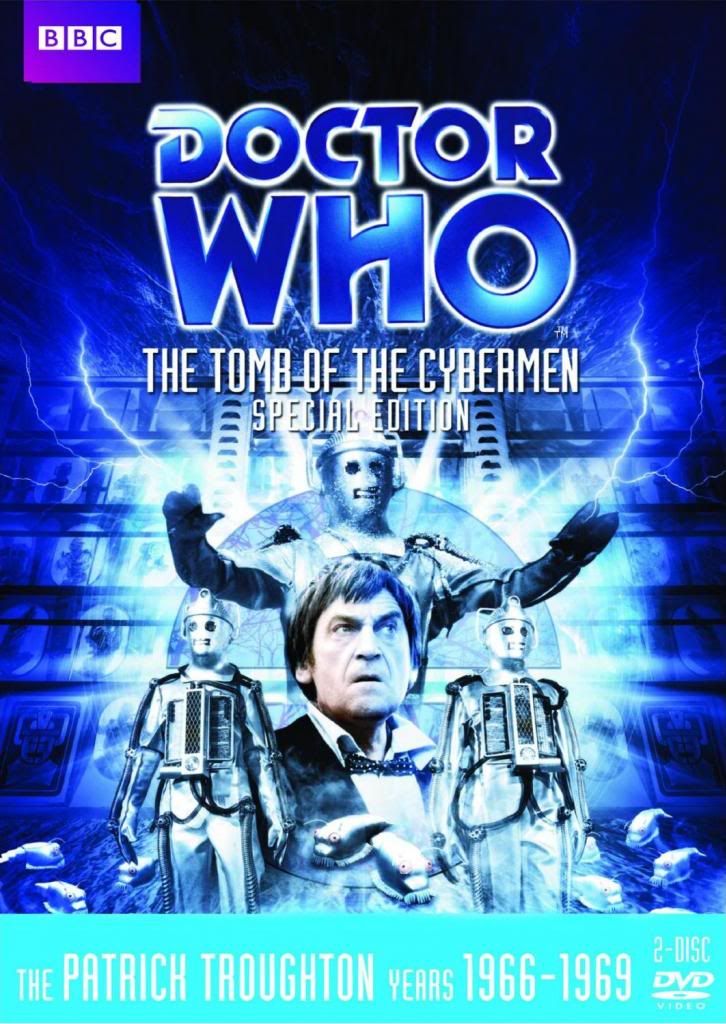Okay, this one may be a bit odd. It happens on account of me running out of time to fit in a selection from Netflix or finish any of the games I have going on at the moment. However, a few weeks ago I made the decision to check out some of the earlier incarnations of Doctor Who. I grew up with Tom Baker as my Doctor, but never really looked that hard at the others. I definitely have an interest in seeing more of Sylvester McCoy (because Radagast!) and more of Jon Pertwee’s run, but perhaps the most challenging Doctor to see in action is the 2nd, Patrick Troughton. Many of his stories are incomplete or missing. But one is complete, and available on the Internet to watch, and that’s “Tomb of the Cybermen.”

In this black and white adventure, the Doctor and his companions, Jamie and Victoria, arrive on the planet Telos and come across a human expedition trying to excavate one of the last known locations of the Cybermen, who apparently had died out many years before. They do find the tomb, but it’s covered in traps and pitfalls. Thankfully, the Doctor is willing to help the humans overcome these obstacles, seemingly out of curiosity but also dreading what they will find. His fears are not unfounded; deep within the structure, the Cybermen are anything but dead. They slumber, and at least one of the humans along for this ride is probably going to get it in their head that waking up the slumbering vestiges of an utterly single-minded precursor to Star Trek’s Borg is a great idea.
“Tomb of the Cybermen” was filmed back in 1967, so to call some aspects of the production “kitsch” would be stating the obvious. More than a couple of the extras go for a bit of camp or bombast in their delivery, and the captain of the rocket ultimately fails in delivering his lines with a passable American accent. The sets feel more like stage pieces than anything, but I have to appreciate the use of practical effects like the electrocution trap on the front door of the tomb and the various “ray guns” used during the production. It feels delightfully retro to watch an earnest sci-fi production of 60s British television in the 21st century, which is a horrifically hipster way of saying I didn’t mind the kitsch.

Also, the Cybermats are adorable. I just can’t find them menacing. Look at it!
There’s also the fact that the Cybermen, in this form, are creepy as hell. Restrained by time and budget, these Cybermen do not have the glistening, full metal bodies of the Cybus models seen in modern Doctor Who, nor even the battle-ready chassis seen in later stories like “Earthshock” or “The Invasion.” One could even extrapolate that, to conserve resources, outer armor and implants were stripped from these slumbering Cybermen before they were put into hibernation. Metal bits are secured to men appearing to be covered in gauze, and while at first this might seem comical, one realizes that our intrepid Time Lord and a handful of squishy humans are quickly surrounded by individuals each ten times the equal of several of the intruders put together. And when the Cyber Controller speaks, you see his jaw move, once, to open his mouth, from which comes a very effective monotone that makes him sound like a diabolical Stephen Hawking. Put it all together, and you have villains that, 40 years or more after the fact, still work.
To top it all off, we have the Second Doctor. I find it very difficult to believe that people wouldn’t find him endearing or at least hilarious. A counterpoint to the First Doctor’s somewhat cranky persona of an old professor of physics, the Second Doctor seems more carefree and flippant, but his odd affectations and penchant for playing the recorder (which sadly does not appear in this story) conceal a master of manipulation and the same staggering intellect Who fans expect. He plays with expectations, verbally lures foes into revealing their true natures, is unafraid to admonish other so-called geniuses, and all but laughs in the face of danger. What more could you ask from the Doctor?

Not pictured: Jamie and his amazing kilt
“Tomb of the Cybermen” may not be the best Doctor Who tale I’ve ever seen – that prize still goes to “Genesis of the Daleks” from the classic run and “Blink” from the new run – but it’s still good. While its effects and set dressings have not exactly aged well, its story and characters have, and I found myself wanting to spend more time with the Doctor, his Scottish friend Jamie, and what feels like a more innocent and experimental time for sci-fi storytelling. Unfortunately, as I mentioned, many of his tales remain lost or incomplete. However, I would like to start building up a collection of classic Who tales, because if you want to understand why this character remains so pertinent and endearing despite long hiatuses and changing actors, you need to know Who he is.



Leave a Reply